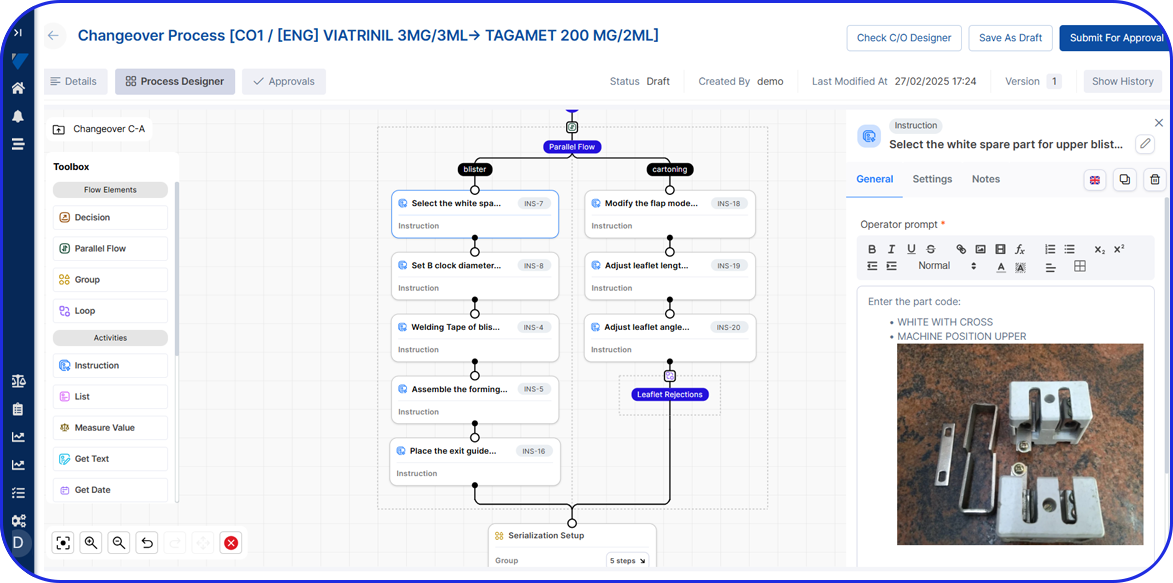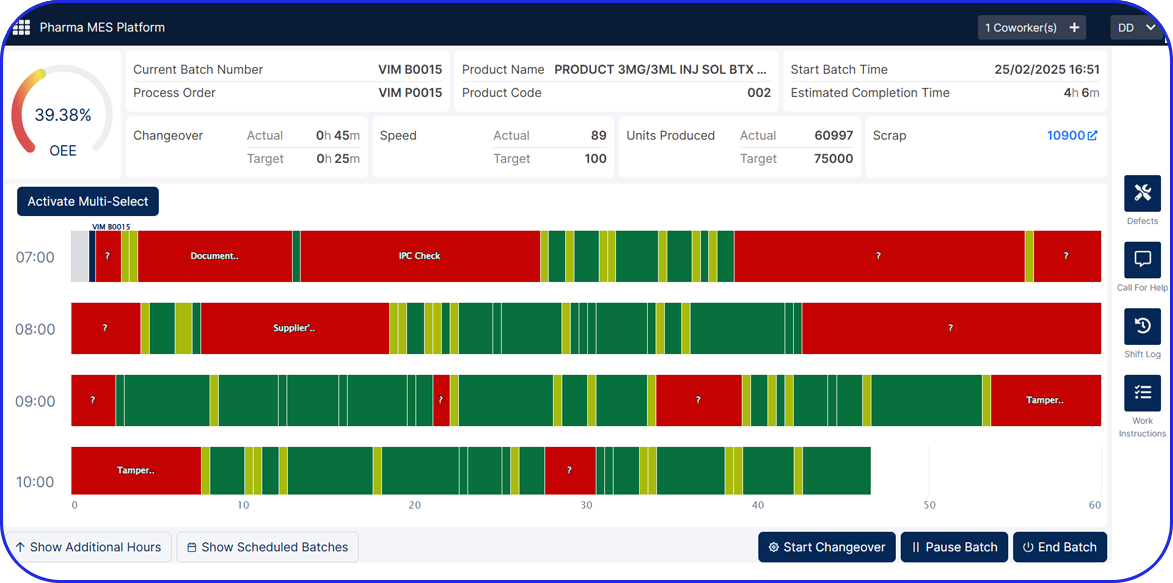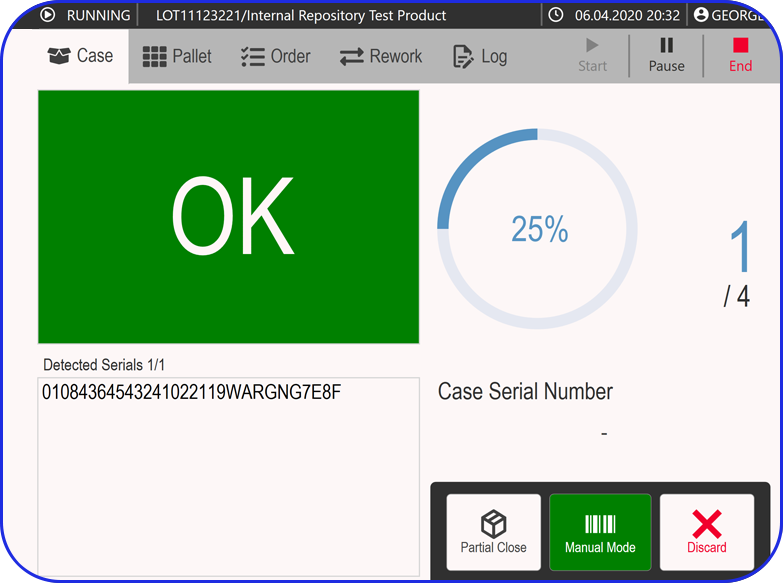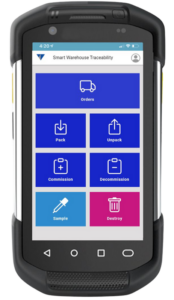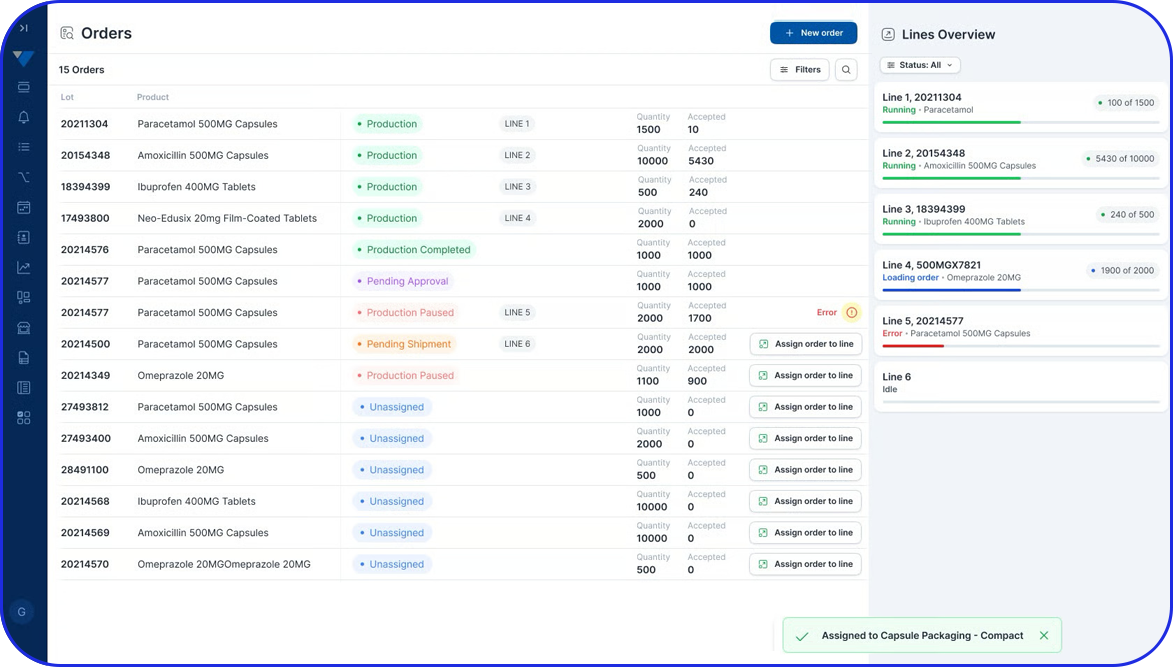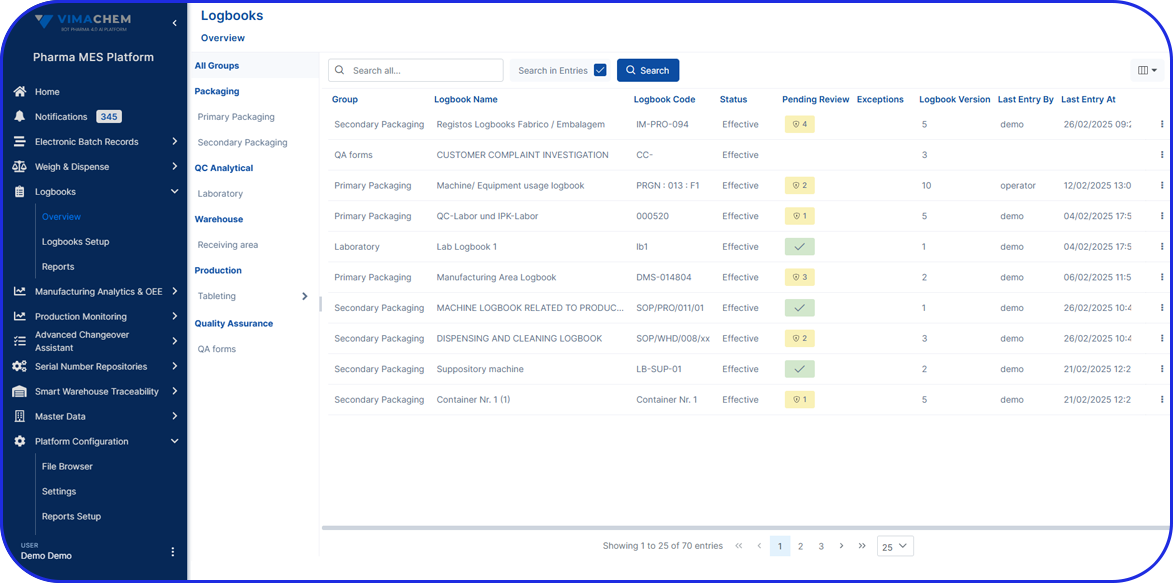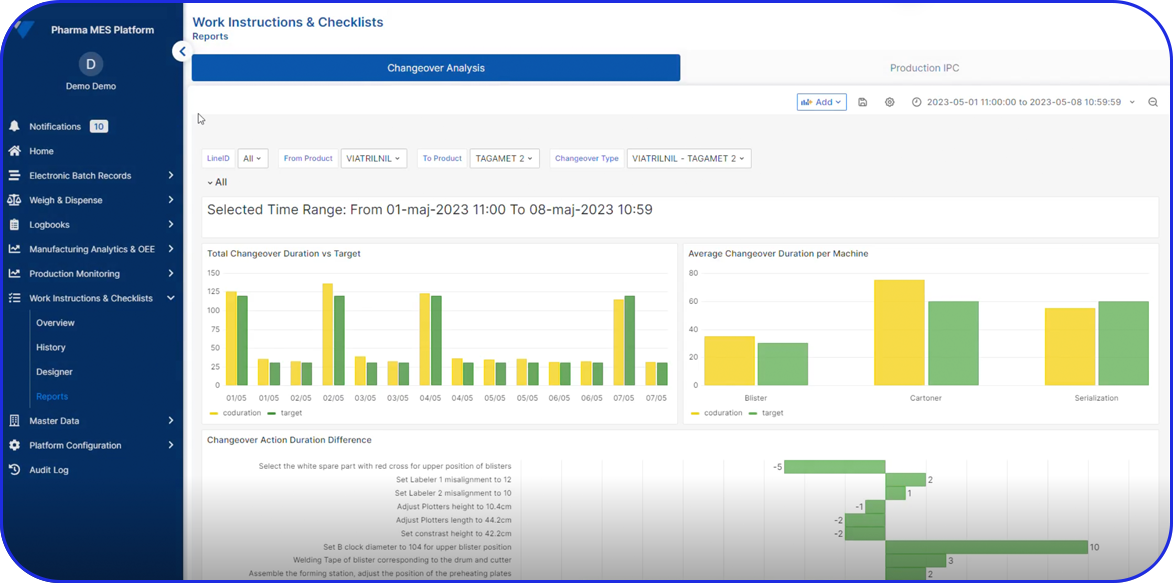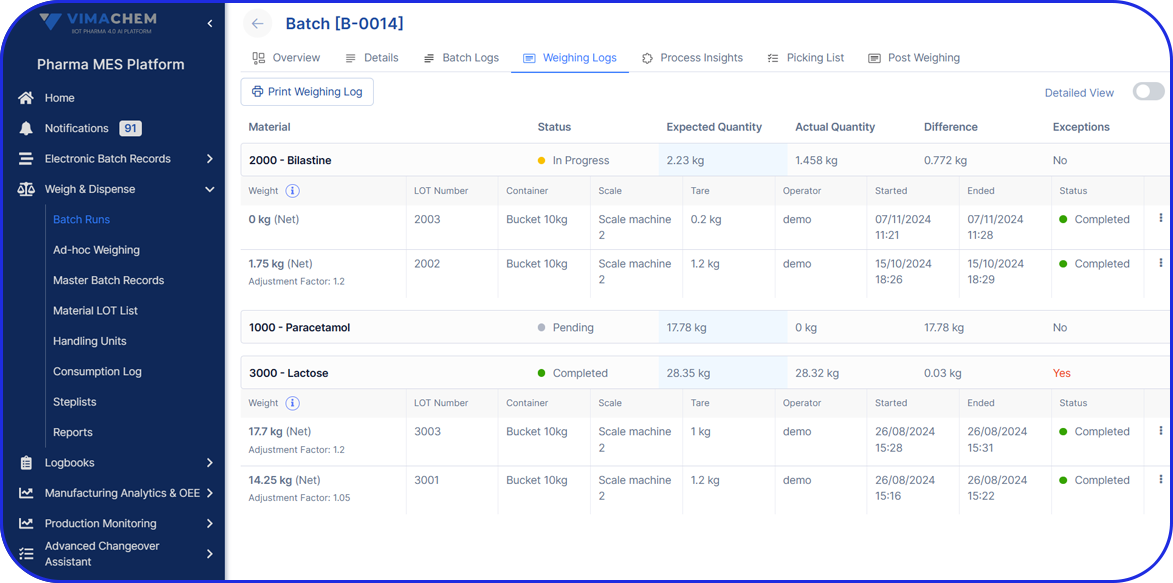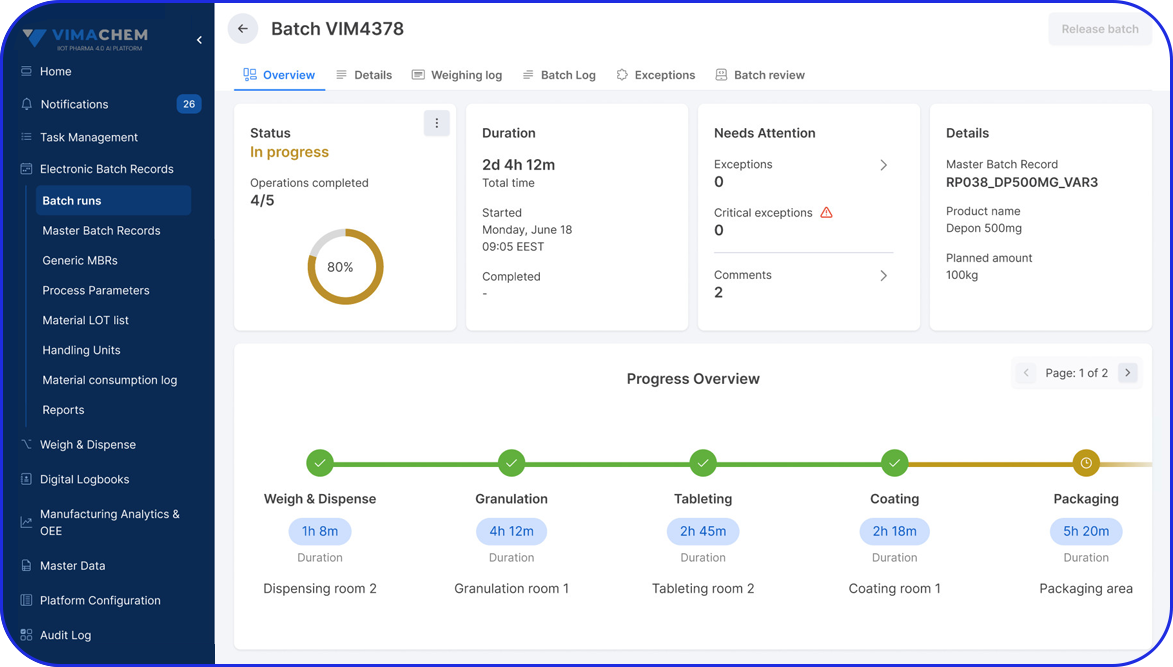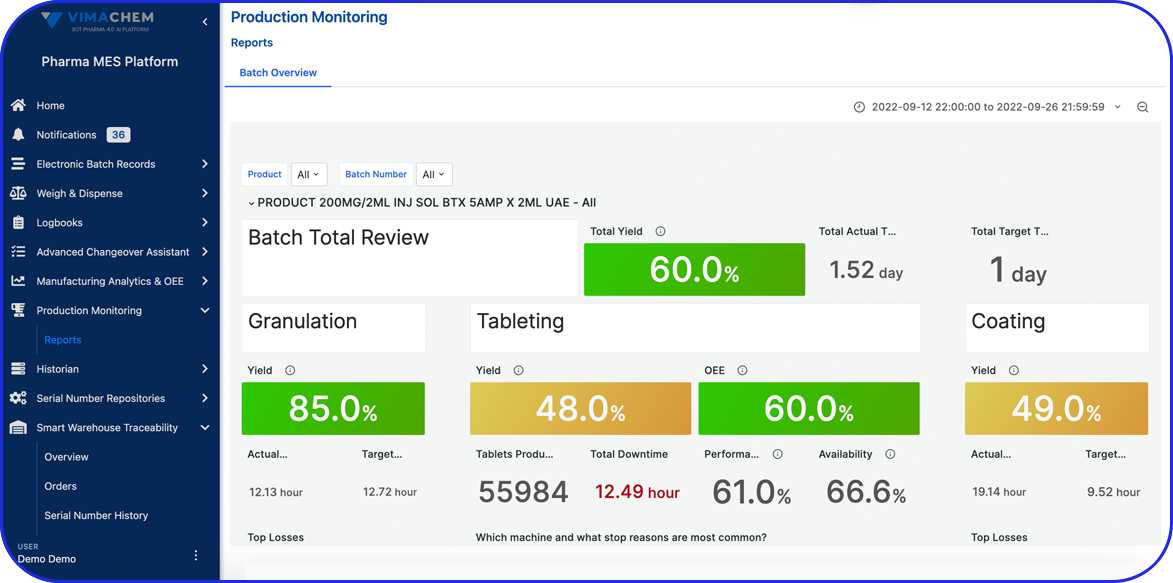What Is Track & Trace In Pharma Manufacturing?
What Is Track & Trace In Pharma manufacturing?
Pharmaceutical track & trace is not only essential but also a regulatory requirement across the global medicine supply chain.
With constantly evolving regulations, increasingly complex global manufacturing, and a surge in counterfeit drugs, traceability is critical for operational efficiency and safeguarding patient health
As global pharmaceutical operations grow more complex, the risks of non-compliance, counterfeiting, and supply chain disruptions are higher than ever. In this environment, flexible serialization and advanced track & trace systems play a critical role in ensuring compliance, protecting patient safety, and mitigating operational risk.
What Is Track And Trace In Pharma?
Pharma track and trace is a comprehensive framework of records, systems, and procedures that aim to monitor the movement of each medication package throughout the supply chain – from production to the individual patient.
Track & Trace Definition
By definition, tracking is the ability to see how the item moves down the supply chain in real time, while tracing is the historical data collection about an item’s journey from its source, i.e. the production stage, to its current location at any given time.
To do so, pharmaceutical traceability involves generating a unique serial number (or identifying code) for each pharmaceutical item produced and imprinting that number on the package and all its components, like paper boxes and blister strips, before shipping it from the manufacturing facility.
Track & Trace And Serialization
Track and trace serialization is a specialized and rather complicated process. Plus, it falls under strict regulatory requirements to ensure safe delivery to consumers, combat counterfeit drugs, and safeguard patients’ health.
Different countries may have different track & trace procedures, but advanced pharma serialization software is still essential for pharmaceutical manufacturers worldwide to comply with serialization regulations.
Why Is Track And Trace In Pharma Becoming More Regulated?
Today, counterfeit drugs are on the rise on a global level. And, while North America is reported as the region with the biggest number of pharmaceutical crime incidents, low or middle-income countries may be facing a more extensive problem.
The reason is that ‘underprivileged’ regions have low or even absent law enforcement activity by drug regulatory agencies. So, it is believed that even 50% of medical products circulating in those markets are substandard or falsified.
But, ‘fake drugs’ numbers are quite high in Europe as well.
Last year, the Welsh Emerging Drugs and Identification of Novel Substances service (WEDINOS) found that 42% of pharma products circulating across the UK (based on testing of 7,000 samples) were either counterfeit branded medical products or illicit drugs with substances other than the purchase intent.
Amid the surge in counterfeit drugs, national and international health authorities are raising concerns and tightening regulations around the circulation of medicines
Today, thanks to advancements in AI and connectivity, pharmaceutical track and trace can be monitored more closely and regulated more efficiently.
The Importance Of Pharma Track And Trace Systems
Track and trace systems for pharma packaging are an indispensable tool for pharmaceutical firms, regulatory bodies, doctors, pharmacists, and, above all, the well-being of patients themselves.
Here’s why:
1. Patient Health
It’s worth mentioning that almost all kinds of generic and branded medicines can be falsified, from costly oncology products to everyday drugs like analgesics. Such fake drugs may contain anything – from mercury to rat poison.
They can thus pose serious health dangers or, in the best-case scenario, fail to treat symptoms and diseases.
2. Enforced Traceability
Track & trace systems enable full pharmaceutical traceability by quickly identifying the origin and distribution path of any legitimate drug product.
So, if any given package hasn’t gone through the serialization process, it can be quickly identified as counterfeit, removed from the market, and reported to the authorities.
3. Easier Recalls
Even in cases of regulated medicines, recalls can happen. Health authorities may have a prescription or OTR (Over-The-Counter) medicine removed from the market because it is found defective or potentially harmful.
But, sometimes, pharma firms themselves may voluntarily recall one of their products if it’s considered problematic after entering the market.
4. Consumer Trust
Transparent systems that ensure drug quality and safety help build trust between pharmaceutical companies, healthcare providers, and patients, improving medical service effectiveness nationwide.
5. Streamlined Supply Chain
Serialization track and trace systems fortify visibility throughout the supply chain.
This helps pharma companies to:
- Monitor demand fluctuations.
- Adjust production.
- Quickly spot inefficiencies.
- Avoid supply disruptions.
- Enable on-time and efficient deliveries.
- Stay ahead in the market.
- Cut down on unnecessary costs.
- Reduce waste.
All in all, tracking and tracing help streamline supply chain processes in both national and global operations.
What Is Global Compliance For Track And Trace In Pharma?
Compliance is the cornerstone of pharmaceutical track and trace systems. Different countries and regions have established specific guidelines to ensure a standardized approach to serialization and traceability.
Counterfeit medicines are a growing global concern. In response, health authorities worldwide are continually updating regulations and implementing safeguards across pharmaceutical manufacturing and distribution to combat the threat.
Moreover, due to the globalization of pharmaceutical supply chains, in many cases, APIs (Active Pharmaceutical Ingredients) and other raw materials may come from one country, like China or India – and be produced in another continent – like the U.S. or Europe. In an interconnected network like this, pharmaceutical firms that operate internationally must navigate and adhere to diverse legal frameworks to achieve global compliance.
Serialization is mandatory in approx. 80% of the countries worldwide, serving as a critical measure to prevent counterfeit drugs from entering the market.
For instance:
United States – DSCSA: Drug Supply Chain Security Act
The Drug Supply Chain Security Act requires serialization and traceability for prescription drugs to improve supply chain security.European Union – FMD: Falsified Medicines Directive
The Falsified Medicines Directive mandates the serialization of medicinal products and the use of tamper-evident packaging.China – CNDC: China National Drug Code
China’s stringent pharmaceutical serialization and traceability standards ensure full visibility across its vast supply chain.
Global compliance ensures that pharmaceutical products meet safety and quality standards, fostering international trust and collaboration.
In such a highly regulated and complicated environment, pharma firms and CMOs (Contract Manufacturing Organizations) need powerful and flexible serialization solutions to facilitate and expedite operations without undermining compliance and quality.
Ready to start? Schedule a custom demo today.
How Vimachem Can Help
Vimachem Level 3 SSM (Serialization Site Manager) is the world’s largest line and network-agnostic serialization solution, built in collaboration with TraceLink. It centralizes daily serialization operations, including data exchange with L2, L4 and L5 systems, in one platform.
With seamless integration across packaging lines, enterprise systems, and more, Vimachem ensures fast, error-free compliance. Plus, it’s part of our broader Pharma 4.0 MES suite, bringing added value throughout your ecosystem.
Our expert team also provides end-to-end regulatory support in pharmaceutical track & trace processes, helping pharma companies take full advantage of their assets and latest technology.

